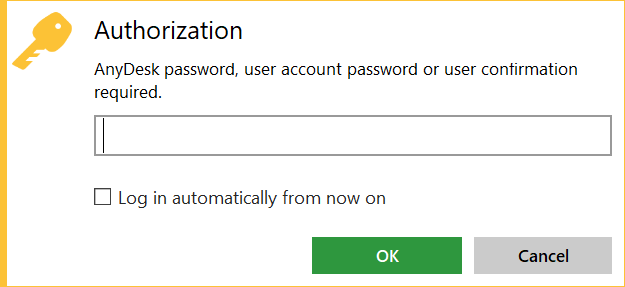AnyDesk Unattended Remote Access
With unattended remote access, users have the ability to set up a remote control session on a computer, tablet or mobile phone without needing someone in front of the remote device to accept the connection. By installing lightweight remote access software onto your devices, you can set up unattended access for various uses.
Whether you’re a professional looking to access files on-the-go or an IT manager looking for a way to streamline support tickets, unattended access can increase accessibility of your remote devices.
Selecting the Right Unattended Remote Access Solution
While there are several remote access software solutions available, AnyDesk has some of the best performance features on the market. When it comes to frame rate, latency, data transfer and frame size score, AnyDesk is ranked as one of the top performers in the space according to independent benchmark reports by PassMark Software and ScienceSoft.
AnyDesk’s remote access software offers many beneficial features like file transfer, remote printing, session reporting, customizable security controls and more. AnyDesk is also available as a mobile application so you don’t have to set up any software in order to use it. This is useful when the program is used to provide or receive assistance without using your device battery to keep it running in the background.
AnyDesk’s unattended access feature is one of the most used functionalities by users. Its benefits enable users like IT support to access customer devices any time, even if the customer is not around. This enables support teams to provide quick and efficient remote support as well as streamline company-wide security updates and installs.
Similarly, if you’re a professional who wants to access your work computer from your laptop at home, unattended access makes it possible. All you need to do is set a password in the “Security” tab of your work computer’s AnyDesk settings and you’re ready to work from home.
How To Set up Unattended Access With AnyDesk
1. Install AnyDesk on the Remote Device
You can download the latest version of AnyDesk on our website. Simply click on the “Download” button. Depending on your web browser, downloading will begin automatically or you will be prompted to select a course of action. AnyDesk is cross functional and available for Windows, ManOS, Linux, and other popular platforms.
2. Configure AnyDesk on the Remote Device
Next, you’ll want to set a computer name and password for the remote computer. All you need to do is set a password in the “Security” tab of the AnyDesk account. Additionally, you can add this remote computer to your address book (not available for all licenses).
3. Connect to the Remote Device
If a password is set on the remote computer, you can choose to log in automatically. Just connect and wait for the password dialog to appear.

Check “Log in automatically from now on” and enter the correct password. You will not be asked for the password anymore for future connections to the same machine. This feature does not save the password itself. Instead, if the password was entered correctly, the remote machine generates a specific token. This token is like a special key that can only be used by a single AnyDesk client. This means that there is no way to retrieve the password in clear text, even if someone has full access to your computer.
How to Keep Your AnyDesk Account Secure
AnyDesk has a variety of security features that ensure that your remote access connections are always encrypted and safe. However, there may be a time when you need to revoke permissions from once trusted devices or secure your account further by changing your password. Let’s walk through how you can revoke permissions to connect to your device on the AnyDesk software from your PC and set up a secure password that makes it difficult for even your most trusted friends and colleagues to guess.
Related Articles
Remote Control Summary report with connection audit
This report provides two different data, depending on whether you are accessing the report at the Customer level or the SO level. At the Customer level, this report provides a detailed list of Remote Desktop Support and managed device remote control ...Port requirements for N-Central
Make sure to configure all necessary ports to ensure seamless communication between Solarwinds components. You can find all port requirements needed by N-Central here: ...N-sight Resource Center
N-sight recently introduced new Resource Center, all-in-one place for support, resources and upcoming Bootcamps. To access it, when you are logged into N-sight simply click on the “?” icon in the top navigation bar (right next to account icon) . ...Senhasegura app certificate update
The default senhasegura installation includes a self-signed 512-bit SSL certificate. Senhasegura recommends that you change this certificate for a valid market certificate. You can use crt or cer for the certificate and a file extension key for the ...EDR permissions in N-able RMM
Currently on the RMM integrated EDR, when you go to the menu and then open the Dashboard your sessions will be on "view only" mode. This is because of the integration with Sentinel One website. To work around this problem follow these steps: 1. Go ...